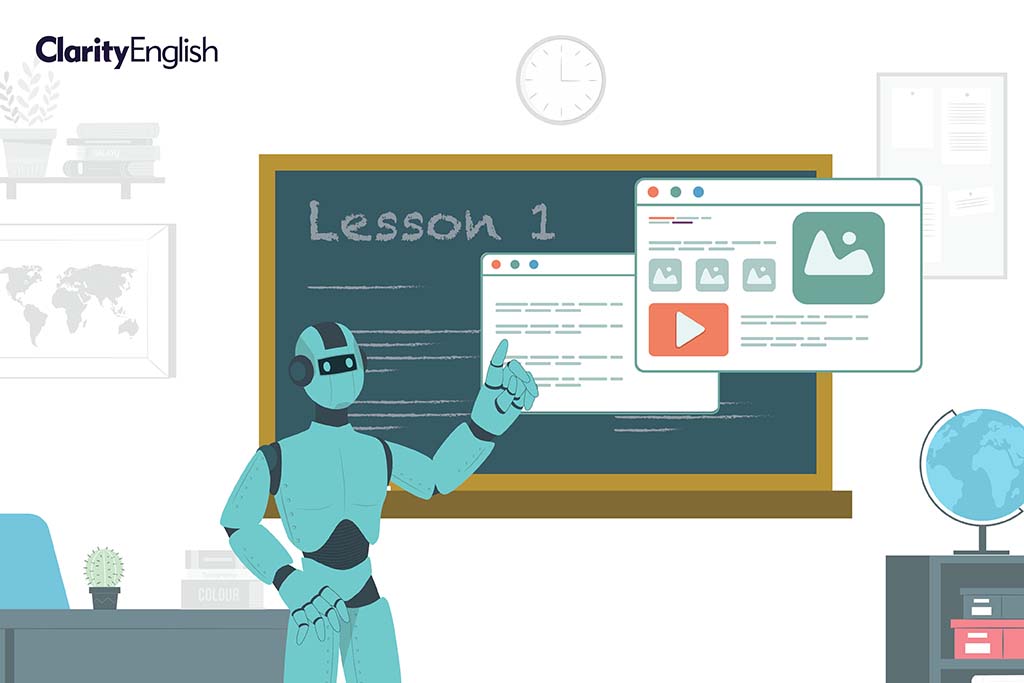‘Technology will never replace teachers, but teachers who use technology will replace those who don’t.’ Paul Liu from the Future Education Research Center in Guangdong talks to Andrew Stokes about the role of online learning in China, and considers the uneasy relationship between teachers and computers…
AS: How widespread is the use of online learning for English in schools and universities in China?
PL: In higher education, online learning for English is very popular. Major textbook providers, such as the Foreign Language Teaching & Research Press and the Higher Education Press, have set up online learning websites to support their textbooks. Colleges which buy the textbooks can use these sites freely, and many now adopt a blended teaching model, integrating online learning materials into classroom teaching. One way of doing this is to divide class hours into two parts: one for traditional classroom instruction, and another for online, autonomous learning in a computer classroom.
However, China’s K-12 education is developing unevenly, with very advanced schools in big cities, and under-developed ones in remote and rural areas. Online learning is popular in schools in big cities, but most learning activities occur after class. Technology in the classroom is still a sensitive issue in China, as I will explain later.
 |
Liu Xiaobin Paul Paul Liu is an associate professor of English education at the School of Foreign Studies at South China Normal University in Guangzhou and a member of Future Education Research Center (FERC). About FERC Since 1997 FERC has pioneered technology and education research, with its objective of enhancing education through ICT. |
AS: Which types of program or software are most commonly used, and why?
PL: In 2016 we saw more use of mobile Internet than desktop for the first time, and a lot of apps for mobile devices have become very popular for Chinese learners of English. According to survey data, among the most popular ten educational apps in China, three are for English learners: a vocabulary learning app is ranked number 1, a speaking app number 7 and another vocabulary app number 9.
This survey shows that Chinese English learners still pay much attention to basic language knowledge, especially vocabulary, which is very important in the exams. Speaking is drawing more and more focus as it is seen as very convenient and highly efficient to use a mobile device to practice oral English. A key fact is that most of these apps are designed for extra-curricular learning, which shows that they are not popular in classroom teaching and learning.
AS: Traditionally, education in China is seen as teacher-focused. Does this create a conflict with the use of technology which is often seen as learner-focused?
PL: A very good question. To some extent a conflict exists. Some Chinese teachers are very cautious about using technology in their classroom, and most primary and middle school students are not allowed to bring a mobile device into the school. However, educators see it an unavoidable trend to use technology. In order to resolve the conflict, students are recommended — or simply use their initiative — to use technology after class. Another way schools and education administrators deal with the conflict is to provide online learning space and resources, such as short video tutorials (called mini-courses) for students to use mainly after class.
Why I mentioned ‘cautious’ above is based on at least two reasons: first, the exam-driven teaching gives little room and time for technology use. A teacher has a lot of teaching tasks to complete before he or she could think of technology. Second, ‘technology’ is an unfriendly term for many English teachers, especially those with lower computer skills. They are afraid that they cannot handle the technical problems during the class. I met a lot of English teachers who even don’t know how to add video to a PowerPoint presentation.
AS: Can you tell me about an inspirational use of technology you have observed?
PL: Yes. It was in an English reading class. The teacher first asked students to read a printed passage quickly, then told them to draw a mind-map on their exercise book in order to find out the main ideas and the structure of the passage. After this, the teacher used an iPad to take pictures of some students’ work. Then he showed these pictures to the whole class by using Airplay (a wireless screencasting function developed by Apple) to cast the screen of the iPad to the classroom’s computer. The next step was to use an app on the iPad to draw a mind-map with the whole class together.
I think the highlights of this lesson are, first, students’ output can be shown immediately to the whole class without using an epidiascope (desktop visualizer) which is rare in a classroom nowadays; second, the process of mind-mapping using an iPad helps students develop their thinking and reasoning ability; third, the teacher no longer confines himself in front of the blackboard or computer in order to draw a mind-map or show the pictures. He gets the freedom to walk around in the classroom while operating the iPad at the same time.
AS: It is often said that that students in China prefer traditional learning materials such as books to online learning. Do you think this is true?
PL: That’s not true. Students love online learning. I think there are a number of reasons for this misconception. First, teaching methods are still exam-driven, and printed materials are enough for this teaching style. Second, students have very little opportunity to do online learning at school. Third, many teachers are not ready for technology. Indeed, teachers’ lack of information literacy has been a bottleneck for the adoption of technology in education. Fourth, in K-12 education, online learning materials are still far from enough to support classroom teaching.
AS: You have been interested in educational technology for at least ten years. What is the biggest change you have seen in that time?
PL: I think the biggest change is in mobile learning. The appearance of smartphones and other mobile devices makes it possible to learn anytime and anywhere, and this learning style is not only a revolution in itself, it also influences some other forms of learning. For example, in China the flipped classroom and MOOCs are both driven by mobile learning.
AS: How about the future? What role do you see educational technology playing in teaching and learning English in the next ten years — and beyond?
PL: A commonly accepted saying is that technology will never replace teachers, but teachers who use technology will replace those who don’t. Most people agree that technology is playing a more and more important role in education. For example, speech recognition is already being widely used in education, even in high-stakes testing such as the College Entrance Examination in Guangdong Province. Virtual reality is just on its beginning stage in education, but I believe it to have a bright future in language learning.
However, more traditional school education is still very important, providing students with systematic learning and helping to shape students to be a ‘whole person’. Therefore, it will be educators rather than independent learners who will most successfully exploit technology’s potential as a tool to assist language learning and teaching.
For that future to materialise, I think at least two things should happen. The first is a top-down process, in which policy-makers should carry out acts to shift from exam-driven to need-and-ability-driven teaching. The second is a bottom-up process, in which teachers’ information literacy should be improved by targeted teacher training.
AS: Paul, thank you very much for sharing your thoughts with us.
You can contact Paul at liuxiaobin@m.scnu.edu.cn

